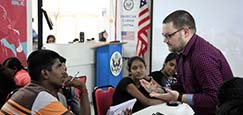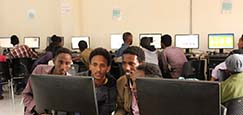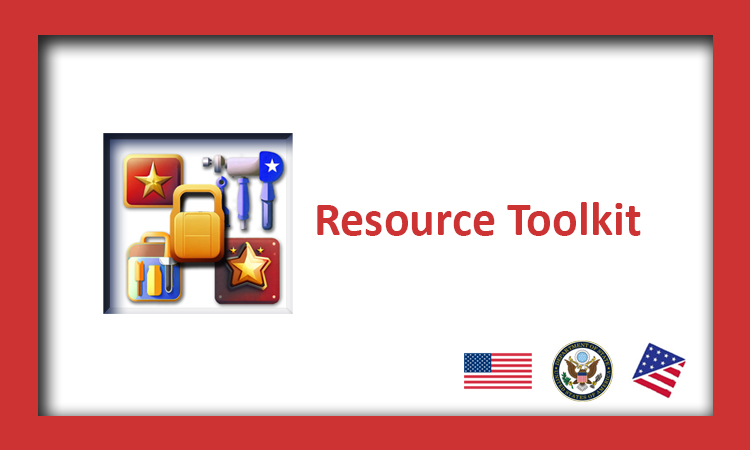FIRST AMENDMENT RIGHTS:
PEACEFUL ASSEMBLY AND PETITION
RESOURCE TOOLKIT FOR AMERICAN SPACES
This Resource Toolkit is designed for programming at American Spaces to create a greater awareness of the rights outlined in the First Amendment of the Bill of Rights, specifically the right to assemble peacefully and to petition the government.
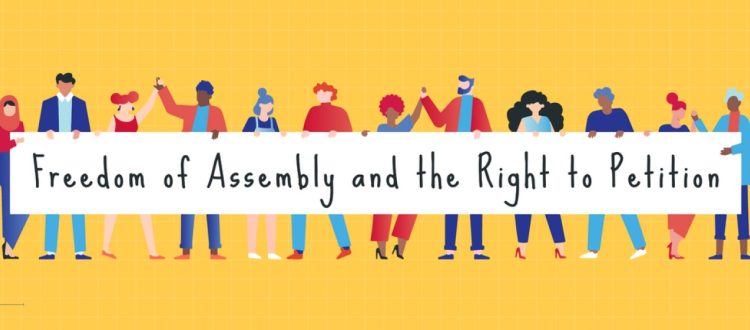
PROTESTS IN AMERICA
Peaceful protests are a sign of a healthy democracy and have a long history in the United States. Here are some famous movements fueled by protests that effected change in America.
SUFFRAGISTS MOVEMENT
American women petitioned and
protested for the right to vote beginning in 1848, and their actions led to the ratification of the 19th Amendment to the U.S. Constitution on August 18, 1920 after numerous state campaigns, court battles, petitions to Congress, and marches. Explore “Shall Not Be Denied: Women’s Fight for the Vote” for more information.
WHAT IS PEACEFUL ASSEMBLY?
The First Amendment to the U.S. Constitution reads:
Congress shall make no law respecting an establishment of religion, or prohibiting the free exercise thereof; or abridging the freedom of speech, or of the press; or the right of the people peaceably to assemble, and to petition the government for a redress of grievances.
Freedom of peaceful assembly is the right for people to
gather together and collectively express, promote,
pursue, and defend their shared ideas. Since America’s
founding, striking workers, civil rights advocates, and
anti-war demonstrators have all taken to the streets in
protest or in support of their causes. It is hard to imagine the American civil rights movement without the March on Washington or the women’s voting rights movement without thinking about the sign-carrying suffragists filling city streets.
PROTESTS IN AMERICA (CONTINUED)
CIVIL RIGHTS
In the 1960s, civil rights activists
with leaders like Dr. Martin Luther
King Jr. led peaceful resistance to
challenge racial inequality,
prompting legislation like the Voting Rights Act, the Civil Rights Act, and rulings from the Supreme Court declaring racial segregation illegal.
LGBTQI+ RIGHTS
Demonstrations following a police raid at Stonewall in 1969 led to a movement to fight for equal rights for lesbian, gay, bisexual, transgender, and intersex (LGBTI) that continues today. See a timeline here.
DISABILITY RIGHTS
Influenced by the Civil Rights movement, Americans with disabilities held the longest peaceful occupation of a U.S. federal building in 1977. In March 1990, protestors with disabilities crawled up the steps of the U.S. Capitol without aid. Four months later, Congress passed the Americans with Disabilities Act (ADA).
RESOURCES
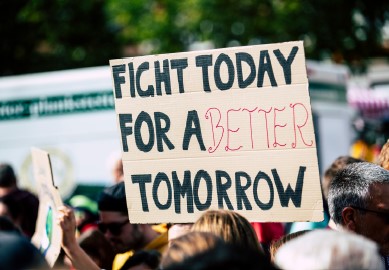
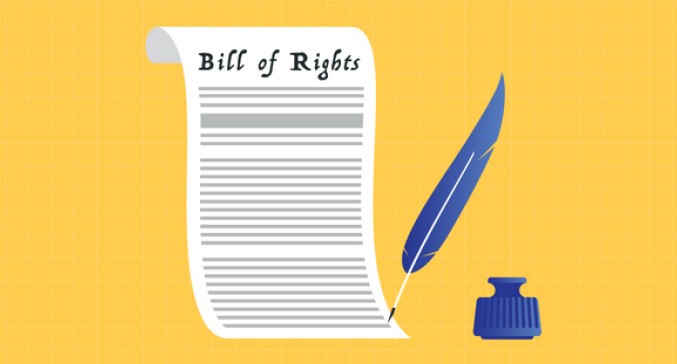
The Right to Petition Explained
The right to petition the government for reconciliation of grievances is the right to make a complaint to, or seek the assistance of one’s government, without fear of punishment or reprisal. This freedom enables the individual to stand up and speak out against perceived injustices or policies they may disagree with. This right can be exercised by gathering signatures for initiatives in elections, lobbying email campaigns, letter-writing, filing lawsuits, and picketing.
While this right allows you to take action on particular issues, the government can impose reasonable restrictions in regards to place, time, and form of petitioning depending on the case. Because of the rights outlined in the First Amendment, Americans can publicly and peacefully participate in their government. See this video for more.
PROGRAMMING IDEAS
- Run discussion or debate clubs with these lesson plans
- This lesson plan from the American Constitution Society for Law and Policy can be used with intermediate level English Language Learners.
- This more advanced lesson plan from the Anti-Defamation League has thoughtful quotes and readings to guide students in a meaningful discussion around the rights to assemble and petition.
- Invite an Embassy/Consulate official to talk about the First Amendment or one of the Protests/Movements mentioned in this toolkit.
- Check out Gale in Context from eLibraryUSA for more resources.
Updated May 2024






